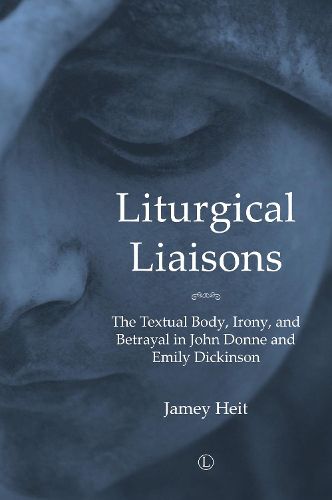Readings Newsletter
Become a Readings Member to make your shopping experience even easier.
Sign in or sign up for free!
You’re not far away from qualifying for FREE standard shipping within Australia
You’ve qualified for FREE standard shipping within Australia
The cart is loading…






When Jesus offers his body as a promise to his disciples, he initiates a liturgical framework that is driven by irony and betrayal. Through these deconstructive elements, however, the promise invites the disciples into an intimate space where they anticipate the fulfilment of what is to come. The Last Supper, symbol of unfinished life and sacrifice, becomes the common thread between John Donne and Emily Dickinson, whose poetics acquire liturgical - and therefore eschatological - features, and body and text become the same.
By tracing the displacing and yet co-ordinating theme of the body as a textual presence, Liturgical Liaisons opens into new readings of Donne and Dickinson in a way that enriches how these figures are understood as poets. The result is a risky and rewarding understanding of how these two gurus challenged accepted theological norms of their day.
$9.00 standard shipping within Australia
FREE standard shipping within Australia for orders over $100.00
Express & International shipping calculated at checkout
When Jesus offers his body as a promise to his disciples, he initiates a liturgical framework that is driven by irony and betrayal. Through these deconstructive elements, however, the promise invites the disciples into an intimate space where they anticipate the fulfilment of what is to come. The Last Supper, symbol of unfinished life and sacrifice, becomes the common thread between John Donne and Emily Dickinson, whose poetics acquire liturgical - and therefore eschatological - features, and body and text become the same.
By tracing the displacing and yet co-ordinating theme of the body as a textual presence, Liturgical Liaisons opens into new readings of Donne and Dickinson in a way that enriches how these figures are understood as poets. The result is a risky and rewarding understanding of how these two gurus challenged accepted theological norms of their day.